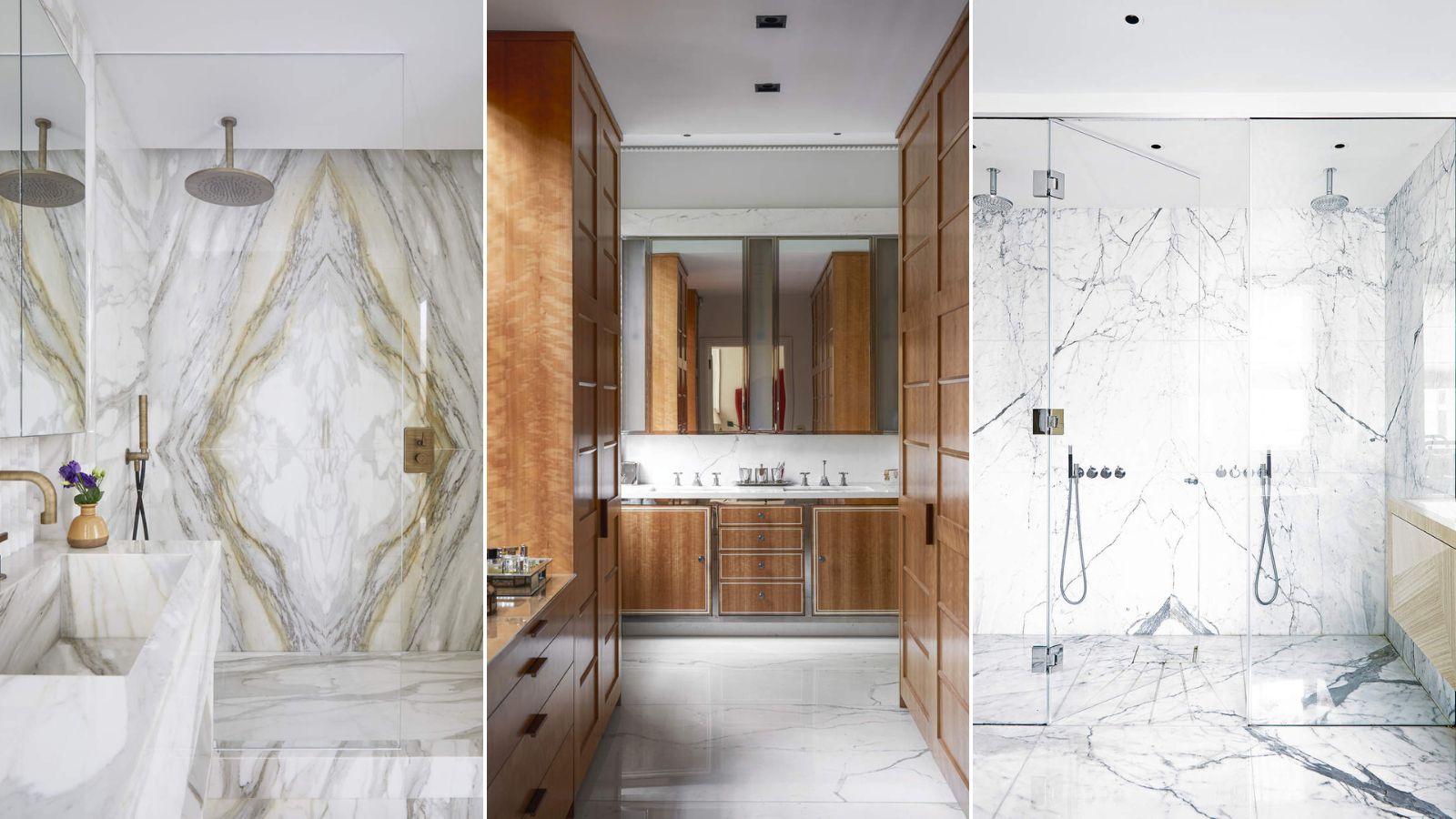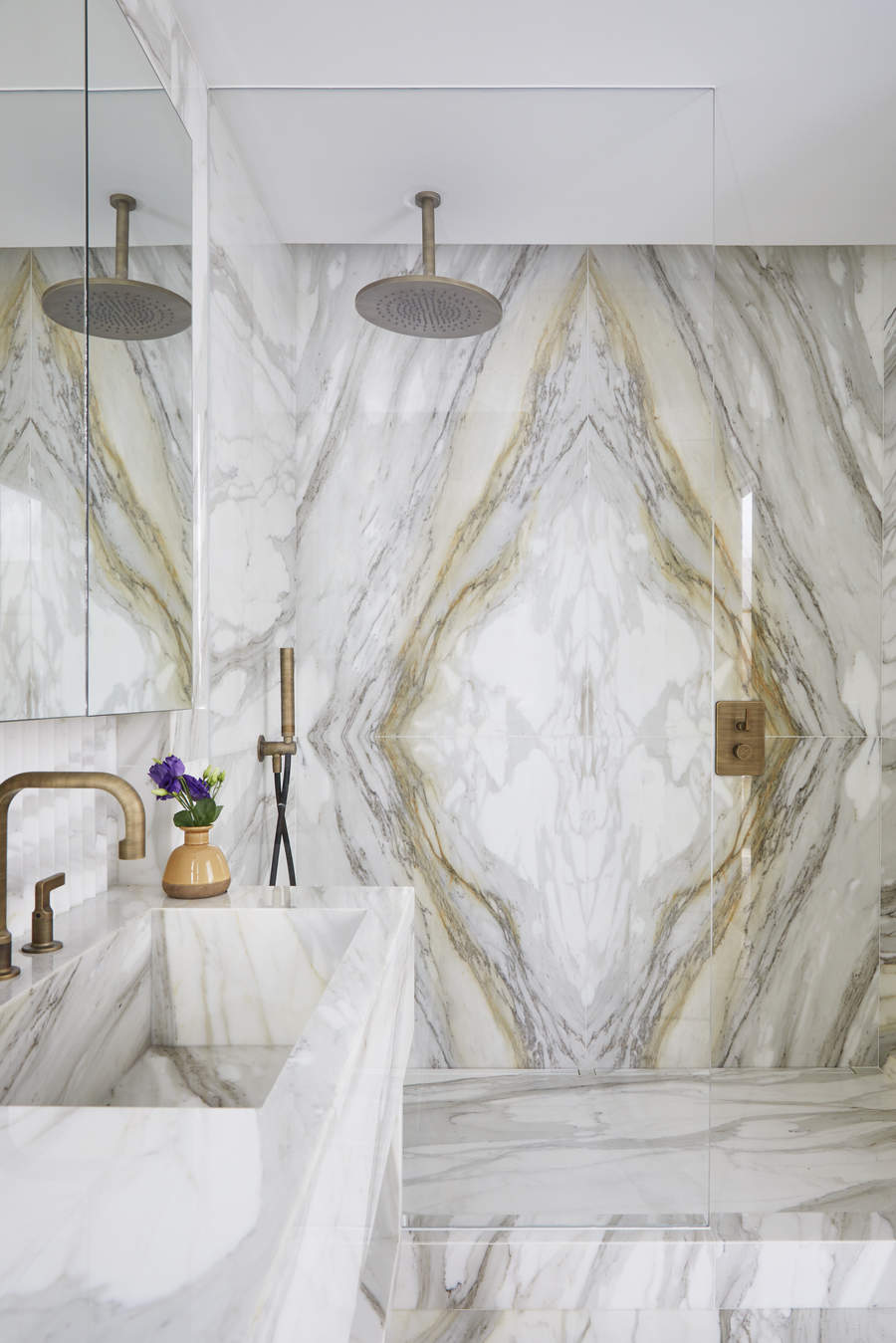The best way to clean marble floors – keep them clean, pristine and polished
I share my favored methods for cleaning marble floors on a daily and weekly basis


There’s no denying that a natural marble floor can elevate a room – I should know, as I chose to install marble floors in my bathroom. But from personal experience, keeping this timeless material pristine and clean requires special care and attention.
There’s a right way to mop a floor and a wrong way (trust me, I’ve made my fair share of mistakes). Unlike hardwood floors, the best way to clean a marble floor is not with a standard mop and bucket. These sophisticated surfaces require specialist tools to do the job properly, so before you start you may need to invest in a few new cleaning cupboard essentials.
Below, I'll share my favored cleaning tips for maintaining marble floors, as well as the tools I use to get them looking brilliant and new every time.
The best way to clean marble floors
Maintaining the beauty of your marble floors doesn’t have to be hard, but it does require regular care. These are the daily and weekly habits I've adopted to keep my own floors clean, as well as my recommended spot treatments for spills and stubborn stains:
The Tools You Need
Before you get started, gather the following supplies:
- Soft broom or dust mop
- Microfiber mop
- pH-neutral cleaner (I use Zep Neutral pH Floor Cleaner from Walmart)
- Soft cloths or towels
- Baking soda
- Marble sealer, optional (I use Aqua Mix Sealers Choice Gold - Quartz, from Amazon)
Daily Maintenance

Dust and Sweep Regularly
Marble floors can quickly accumulate dust, dirt, and grit (especially in kitchens and bathrooms), which can cause scratches if they aren’t regularly brushed away. I use a soft-bristled broom to sweep my marble bathroom floors and I avoid using hard or stiff bristles, which can scratch the marble.
A dust mop – such as this Eyliden Microfiber Dust Mop from Walmart – is an excellent alternative to a broom, as it can pick up dust and small particles without causing damage. Just ensure the mop head is clean before each use to avoid spreading dirt around.
Design expertise in your inbox – from inspiring decorating ideas and beautiful celebrity homes to practical gardening advice and shopping round-ups.
I don’t recommend vacuuming marble floors, but if you opt for this method, make sure you use a vacuum cleaner with a soft brush attachment and avoid using the beater bar, as it can scratch the surface of your floors.
Quick Wipe-Ups
Marble is extremely porous, which means it can absorb liquids and stain easily. That's why I make sure I act on spills immediately by using a soft cloth or paper towel to blot the area gently. Rubbing can spread the spill and potentially damage the surface.
For sticky or stubborn residues, I dampen a cloth with warm water and gently wipe the area. The cloth should not be overly wet, as excess moisture can seep into the marble and cause damage.
Weekly Cleaning

Mopping
Once a week, I fill a bucket with warm water and add a small amount of Zep Neutral pH Floor Cleaner from Walmart (for light cleaning, I use 2oz. per gallon of water, and for heavy cleaning, I use 3-5oz per gallon of water). I started using Zep because it’s specifically designed for stone floors. You should avoid acidic or alkaline cleaners as they can damage your marble surfaces.
I dip a microfiber mop in the solution, wring out excess water, and gently mop the floor, using the figure-eight technique. After mopping, I rinse the floor with clean water to remove any remaining cleaner and dry the floor thoroughly with a soft cloth to prevent water spots.
Tackling Stubborn Stains
For tougher stains that won't easily blot out, I mix a small amount of baking soda with water to create a paste. I then apply this paste to the stain and let it sit for a few hours (never leave it for more than 24 hours) before gently wiping it away with a damp cloth, rinsing the area with clean water, and drying it thoroughly.
Tips For Long-Term Care
Apply a sealant: To keep your floors pristine, consider applying a marble sealer every 6-12 months to protect the surface from stains and etching. After I've cleaned my floors thoroughly, I like to use Aqua Mix Sealers Choice Gold - Quartz from Amazon because it doesn't dry slippery and it's water-resistant.
Avoid Harsh Chemicals: Don’t be tempted to use vinegar, lemon juice, bleach, or ammonia on marble flooring, as these can dull, stain, or damage the surface. Stick to pH-neutral cleaners designed for natural stone surfaces.
Use rugs: Place rugs or mats at entryways to catch dirt and grit before it can get to your marble flooring, and consider attaching felt pads to the bottom of furniture legs to prevent scratches.
As well as learning the best way to clean marble floors, it’s a good idea to swot up on the best way to clean marble countertops, too. If you want to maintain the beautiful natural patina of these surfaces, it pays to inspect them regularly and stick to a regularl cleaning routine.

Gabriella is a freelance contributor for Homes & Gardens. She is a DIY enthusiast and a lover of all things interior design, often found antiquing or browsing the aisles of her local hardware store. She has a particular passion for historic buildings and is in the process of renovating a Victorian coachhouse in the countryside.
For much of the past decade, Gabriella has worked as a freelance writer, crafting copy for national publications and renowned homeware brands. Most recently, she worked for Homebuilding & Renovating Magazine and is the former Head of Solved at Homes & Gardens, focusing on case studies for the magazine and website, as well as writing features about issues surrounding historic and listed building projects.